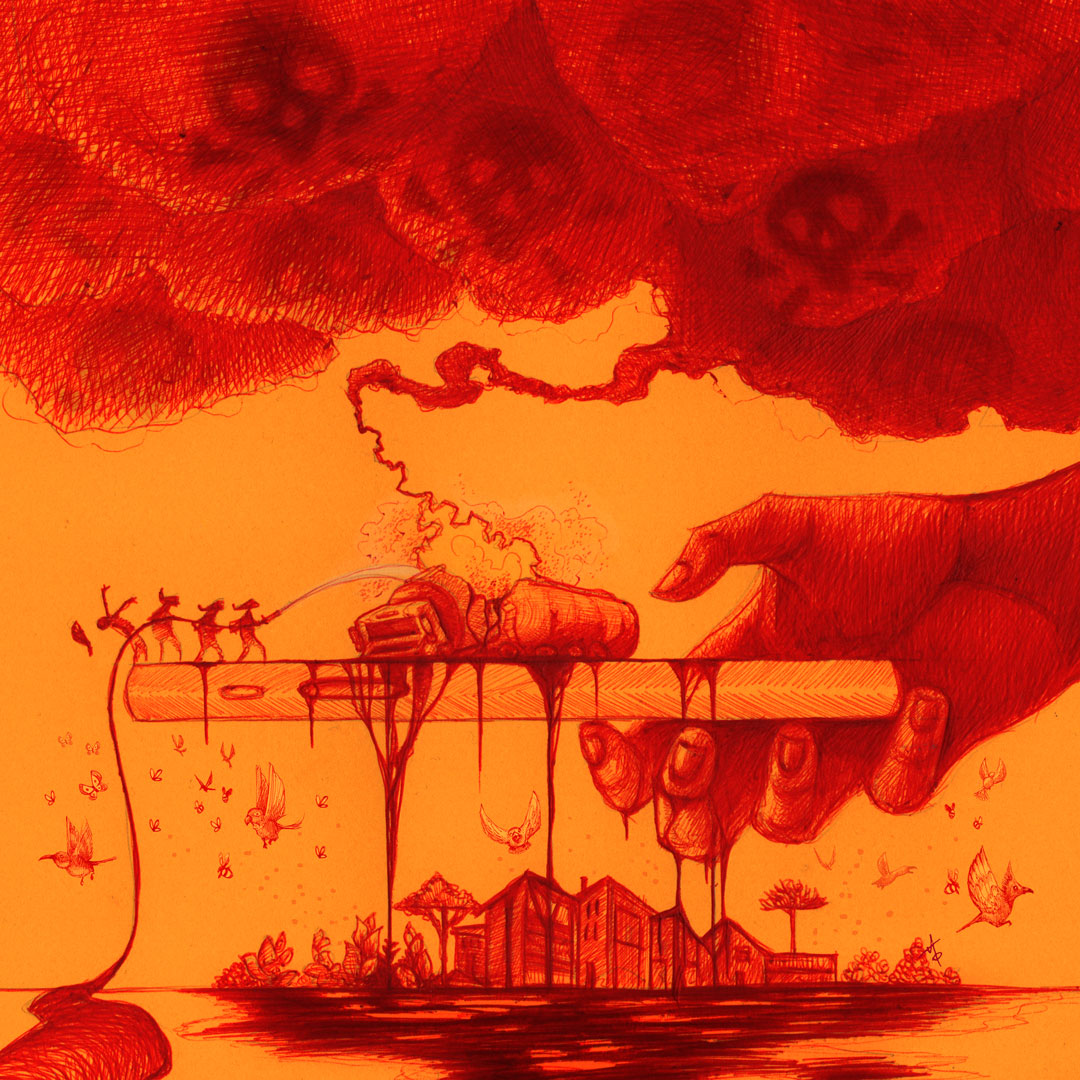Toxic cloud

My phone looked like a sandwich. On a hot day in February reaching almost 40℃, the battery swelled up. The turmeric (our garden’s strongest plants) withered away, and the phone shut off.
I went to pick up the phone from the service center. When I turned it on, the news found me. In the town of Ituzaingó, a truck had spilled a chemical with a strong noxious odor.
At 4pm, the police, National Guard and 80 firefighters mobilized to face the emergency while thousands of people passed by without knowing what was coming from the truck. The driver said he did not know what kind of agrochemicals were inside but the container he was transporting was above 150℃. Images of the cloud began to flood social media.
After noon, the sky was cloudy, and the winds from the northeast blew at 3.1 km/h. The temperature was 32.3℃ in a summer with 9 consecutive heat waves. No one knew the cloud over the highway was spreading thousands of liters of clethodim imported from China: an herbicide known to be combustible, induce development toxicity in animals and impact the central nervous system. Four firefighters were hospitalized due to intoxication, and one fainted on the spot.
The municipality recommended everyone remain inside their homes and close doors and windows. Fifteen adults and four children were taken to the hospital with symptoms of intoxication. At 10pm, the truck caught fire.
At the time, no one said that the truck was heading to General Rodriguez: a SIGMA operational base, the company responsible for the 2019 explosion of an illegal agrochemical deposit that released a million liters of glyphosate, ammonium glufosinate, paraquat, 2,4-D, atrazine, chlorpyrifos, lambda and bifenthrin into the air, next to a public school in Mercedes, Buenos Aires, killing a worker and seriously injuring a firefighter. In many minds, the scenes were linked and in fact smelled like SIGMA. Another molotov cocktail of dangerous pesticides unleashed.
In Argentina, over 500 million liters/kilos of pesticides are used annually. It is the country with the third highest use of pesticides worldwide and ranks first in liters per person. 120 agrochemicals banned worldwide are still used here.
Planes spray a chemical contained in Bayer’s best-selling herbicide Roundup over rural schools; glyphosate rains down meters away from the windows of houses. Used for over 30 years, atrazine dissolves in water and lives in aquifers and in the blood of bodies. Linked to cancer, it interferes with the hormones that regulate the development and functioning of all our bodily systems.
What can we do? Well, our environmental NGO again finds itself as a plaintiff in a lawsuit against SIGMA, just a few years after the company was fined 8 million pesos for the last explosion. More civil and criminal claims have been filed against those responsible for the truck explosion. We are also promoting an ordinance to regulate the use of agrochemicals and promote agroecology.
I am writing this text so that you, on your phone, somewhere in the world can see how agribusiness destroys communities. These are not mere accidents but a symptom of the system. We need to put a stop to this madness and restore the balance of our ecosystems.
Story by Pablo Andrés Bobadilla for Organización de Ambientalistas Autoconvocados (OAA)
Art by Antiochus Omissi @antiochusomissi. Antiochus is a freelance illustrator and painter, currently living and drawing in Avignon, France.